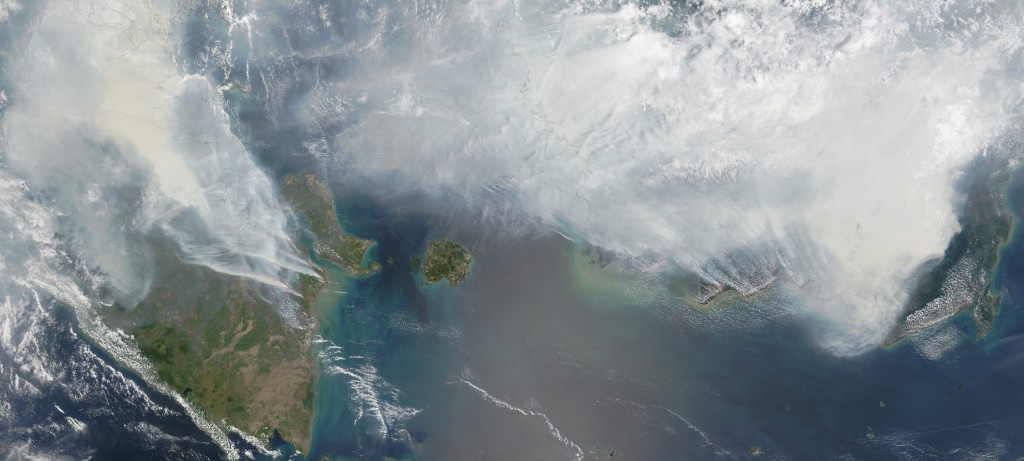Indonesia’s Parched Peatlands Burn Under El Niño
Indonesia on track for worst fire season since 1997
This post contains excerpts from a story published by IRI on Medium.com. View the full story, including data and additional graphics, here.
Written by staff from the International Research Institute for Climate and Society and NASA Goddard Institute for Space Studies. Media can contact Francesco Fiondella.
Much of western Indonesia is currently burning, producing enormous amounts of smoke-haze, and disrupting large parts of society in the region. Scientists are suggesting that this is not ‘normal’ seasonal burning and could end up ranking among the worst on record. This is one of the first severe impacts of the strong El Niño that has been developing over the last year.

September 24 image from the Moderate Resolution Imaging Spectroradiometer (MODIS) on NASA’s Terra satellite. Thick gray smoke from fires hovers over the islands of Sumatra (left) and Kalimantan (right) and has triggered air quality alerts and health warnings in Indonesia and neighboring countries. Visibility has plummeted.
There will likely be little relief through October and possibly into early November, according the most recent seasonal climate forecasts issued by IRI. These forecasts show a very strong chance that most of western Indonesia will see below-normal rainfall for the remainder of the dry season. Allan Spessa of the Open University in the United Kingdom has shown that these types of forecasts can, on average, be reliable predictors of severe fire years.
“Critically, the strong El Niño translates into a delayed onset of the rainy season,” says Andrew Robertson, who heads IRI’s Climate Group.
“Our research shows that the severity of the fire season is related to the onset date of the rainy season. If it’s delayed, fires will burn longer and intensify the environmental and social impacts.” – Andrew Robertson.
The smoke contributes to enhanced concentrations of multiple pollutants, most notably particulate matter and ozone, which have a significant negative impact on air quality and people’s health. Miriam Marlier, of the University of California in Los Angeles and Columbia University, has studied how these fires affect regional mortality. “These fires not only impact Indonesia but also conditions nearby in Singapore and Malaysia.”
According to her previous work, about 11,000 adults in the region died prematurely in 1997 due to cardiovascular diseases related to poor air quality attributable to fires.

You must be logged in to post a comment.